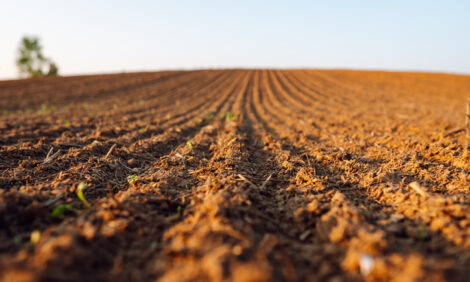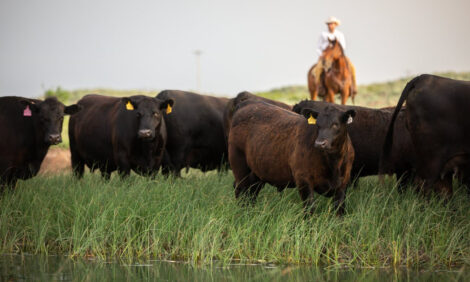



Evaluation of Beef Cattle Winter Feeding Systems in the Southeast
Winter grazing a triticale and ryegrass blend may reduce winter feeding costs, according to researchers.For stockers, winter feeding represents the greatest cost to a beef enterprise, says a team from the University of Florida.
They investigated the effect of animal performance and forage production per pound of weight gained.
This was carried out over three different diets.
1) Bahiagrass hay fed ad libitum on a dormant bahiagrass pasture and supplemented with one per cent feed.
2) Grazing winter pasture comprised of triticale/ryegrass
3) Grazing a pasture of rye/ryegrass.
Introduction
The profitability of beef production is as many other production systems, a function of a balance between inputs and outputs. Outputs can be more easily defined than inputs and can be simplified as pounds of beef sold in one way or another: carcass, replacement heifers, yearlings, weaned calves.
However, inputs can be more challenging to define and vary greatly with different production systems. In addition, inputs can be often difficult to measure, such as labor cost (especially when we consider our own time, which is often not accounted for), fertilizer savings due to grazing, and opportunity cost among others.
In the current scenario of volatility in fuel, grain and fertilizer prices, it is not surprising that the focus of the beef industry has been turning to the inputs side of the equation. Several strategies
have been developed to attempt to mitigate the ever-rising costs of production and we may be
experiencing a shift in paradigms in the beef industry.
The increased use of forage varieties that produce well under drought conditions or under reduced soil fertility is proof of that change in paradigms. The suitability of rye and triticale either as a monoculture or in blends with ryegrass as annual winter pastures has been evaluated for its forage production potential in recent years (Myer et al., 2009, 2011).
The objective of this study was to compare beef cattle winter feeding systems in the southeastern
U.S. in terms of animal performance, forage production and cost per pound of weight gained.
Results
The results of the study are shown in Tables 1 and 2, and Figures 1 and 2. In terms of cost of gain, triticale + ryegrass showed a significant advantage over the other treatment options, with a total cost of gain of $1.06 per lb of BW gained. This largely due to the high ADG rates observed with triticale (Table 3 and Fig. 1) when compared with the other treatments.
Supplementing heifers with 1 per cent of their BW three times per week with a 50:50 mix of soy hulls and corn gluten feed pellets resulted in 1.2 lb/d or BW gain. This was not sufficient to dilute the high costs associated with feed purchase and delivery as well as hay feeding costs. Because of the poor BW gain in the heifers grazing rye + ryegrass, this treatment showed the highest total cost of gain ($1.99/lb).
It is noteworthy that by design, the stocking rate in the grazing treatments was sufficiently low to
avoid restrictions on intake and thus in animal performance. The main differences in animal performance observed between grazing treatments are related to pasture quality rather than quantity.
Follow up studies using the same annual winter pastures are underway to determine the effects of forage production on pasture carrying capacity using a variable stocking rate.
Conclusion
The cost of winter feeding continues to be the largest single cost in a beef cattle operation. Price volatility in grain byproducts, fertilizer and fuel has shifted the paradigm of production to place more emphasis on the inputs costs of an operation. Developments in terms of forage varieties have provided cattle producers with more options for winter forages.
Blending winter forage species with different growing patterns can be an alternative to produce enough quality and quantity to support high rates of weight gain. Grazing a blend of triticale and ryegrass was shown to be a promising strategy to reduce the cost of winter feeding.


